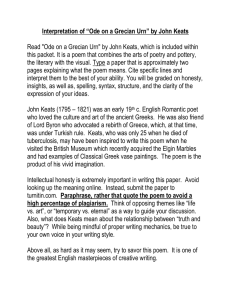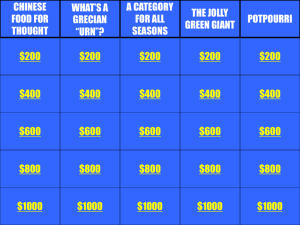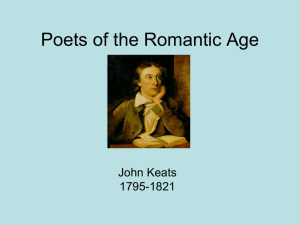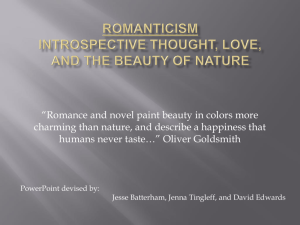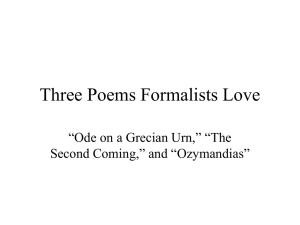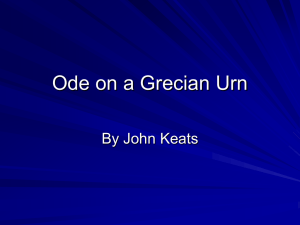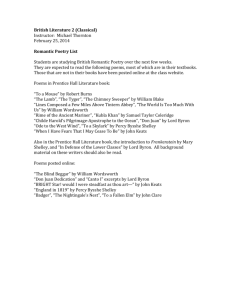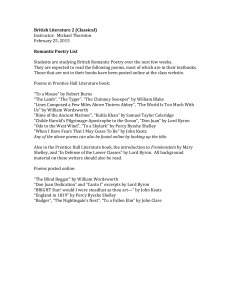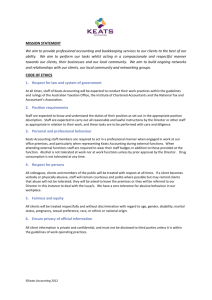Keats and Shelley
advertisement
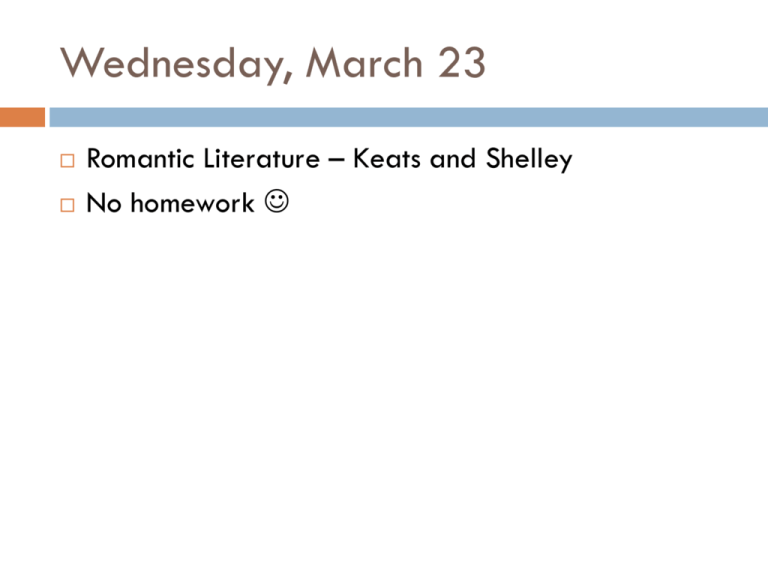
Wednesday, March 23 Romantic Literature – Keats and Shelley No homework PERCY BYSSHE SHELLEY 1792-1822 Percy Bysshe Shelley Nature as sublime truth Volcanic personality More melancholy Outspoken against marriage Chose exile in Italy Percy Bysshe Shelley Other famous works: “Ode the the West Wind”, “To a Sylark” Ozymedias Another name for Ramses the Great The speaker recalls having met a traveler “from an antique land,” who told him a story about the ruins of a statue in the desert of his native country. Longs historically on the past The redemptive power of nature The idea of nature’s sympathy with humankind The view that one who is close to nature is close to God Ozymandias JOHN KEATS 1795-1821 John Keats 1795-1821 English, Romantic, Nature poet Lamented the fleeting nature of life’s pleasures Contemplated the briefness of life. Best known for his odes. Life and inspiration Mother and brother died of tuberculosis Keats died of TB at age 25 What effect might this have on his poetry? Life and inspiration Threat of death: Heightened awareness of: Beauty Human love Friendship Virtues of a higher reality achieved permanence only in art. “Ode on an Grecian Urn” 1816 – Keats visits the Elgin Marbles at British Museum Inspires the following ode Ode: a lyrical poem of a certain structure usually of a serious or meditative nature. A poem full of paradox a statement whose two parts seem contradictory yet make sense with more thought “Deep down, he’s very shallow” “He has ears, but cannot hear” “Ode on an Grecian Urn” 1. 2. 3. 4. 5. Read the poem together. Pair up with the person next to you. Take out a clean piece of paper. I will project two questions. The partner wearing more jewelry will answer the first question while the other partner answers the second question. Really put thought into this. Then, after about five minutes, switch papers and respond to your partners thoughts. Address them directly. “Ode on an Grecian Urn” 1. 2. In stanza III, How does Keats portray real life and actual passion in the last three lines? Which is preferable, the urn life or real life? What about the repetition of “happy?” In stanza IV, why does Keats give three possible locations for the imaginary town? Why does he use the word “folk,” rather than “people?” “Ode on an Grecian Urn” 1. 2. In the final couplet, is Keats saying that pain is beautiful? Are the concluding lines a philosophical statement about life or do they make sense only in the context of the poem?
